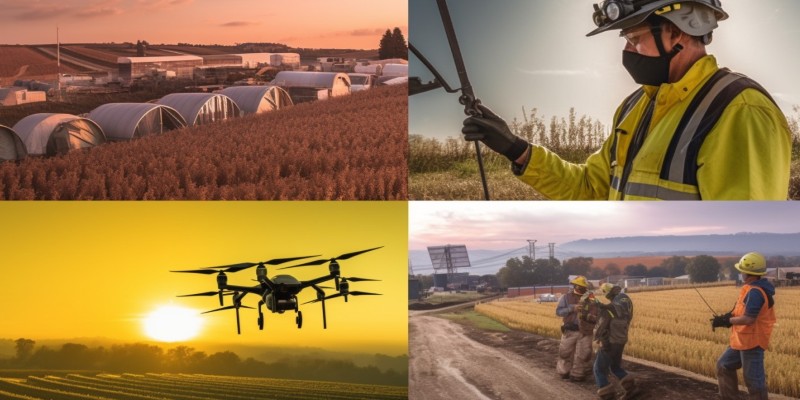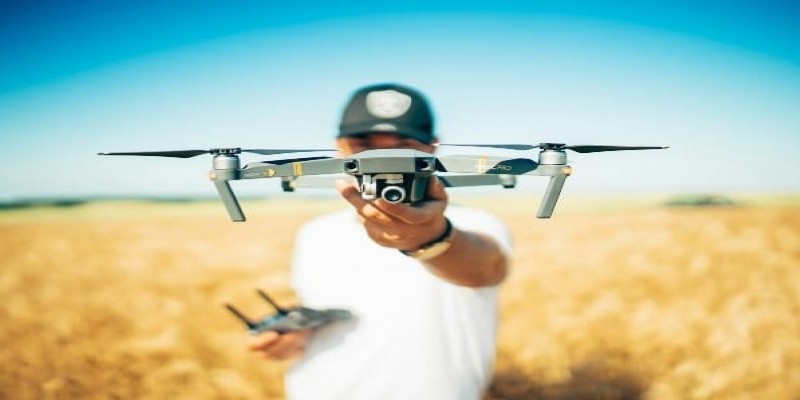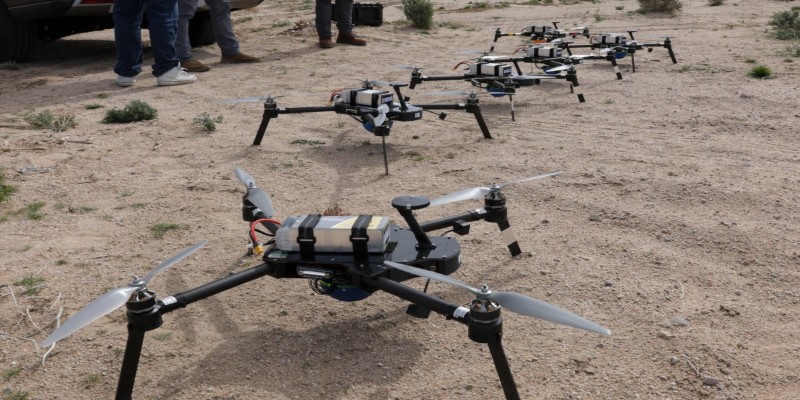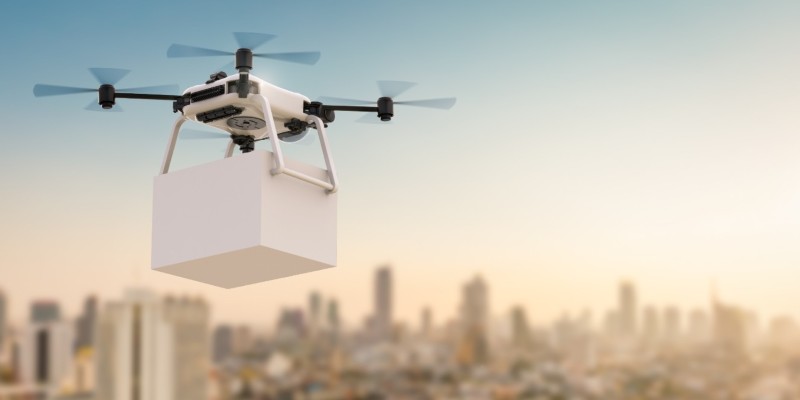How Drones Are Changing The Tech World
The rapid evolution of drones has transformed the technology landscape, pushing boundaries in innovation and redefining industries. Once seen as simple flying gadgets, drones now play a vital role in various sectors, from agriculture and logistics to filmmaking and defence. This article delves into drones' transformative impact, highlighting their applications, advancements, and challenges.
Revolutionizing Industries With Precision
Drones have introduced precision and efficiency to industries that previously relied on traditional methods. Agriculture uses drones for crop monitoring, soil analysis, and pesticide spraying. Equipped with high-resolution cameras and sensors, they allow farmers to identify Stress areas in crops, saving resources and boosting productivity. The ability to gather real-time data ensures informed decision-making, improving yield and sustainability.

The construction industry uses drones for site surveys and progress monitoring. By capturing aerial imagery, they enable project managers to assess timelines and detect potential issues without needing costly on-ground inspections. Similarly, drones inspecting wind turbines, pipelines, and solar farms benefit the energy sector. Their ability to access hard-to-reach places enhances safety and reduces costs. These advancements are transforming traditional workflows, making industries more efficient and safer.
Transforming Logistics And Delivery Systems
The rise of e-commerce and consumer demand for faster delivery have positioned drones as a game-changer in logistics. Companies leverage drones for last-mile delivery, significantly reducing transportation time and costs. Lightweight drones can deliver packages in urban areas, while larger models are being developed for bulkier shipments. This shift not only streamlines supply chains but also reduces the carbon footprint associated with traditional delivery methods.
In humanitarian aid, drones are making a significant impact by delivering medical supplies and food to remote or disaster-stricken areas. Their ability to navigate challenging terrains ensures timely support during emergencies, potentially saving lives. Drones are becoming indispensable in logistics and delivery systems, from commercial efficiency to life-saving operations.
Enhancing Creativity And Storytelling In Media
Integrating drones into the creative industry has redefined storytelling and content creation. Filmmakers and photographers use drones to capture breathtaking aerial shots that were once only possible with expensive equipment like helicopters. With advancements in stabilization technology and 4K cameras, drones have democratized high-quality filmmaking, enabling creators to craft visually stunning narratives without exorbitant budgets.

Beyond movies, drones are revolutionizing live broadcasting for sports, concerts, and festivals. Their ability to provide unique perspectives adds depth and dynamism to visual content, captivating audiences worldwide. These tools have elevated professional creativity and made it more accessible to hobbyists and independent creators, fueling a new era of visual innovation.
Strengthening Security And Disaster Management
In defence and security, drones have become indispensable tools for surveillance and reconnaissance. Military drones with advanced sensors and cameras can operate in hostile environments, collecting critical intelligence without endangering personnel. Their ability to cover vast areas with precision makes them invaluable in safeguarding borders and monitoring sensitive zones.

Drones are pivotal in assessing damage and locating survivors during natural disasters. Their aerial capabilities provide a clear view of affected areas, aiding rescue teams in planning efficient operations. Law enforcement agencies rely on drones for crowd monitoring, search-and-rescue missions, and crime scene analysis. By improving situational awareness and response times, drones save lives and enhance security measures.
Pioneering Technological Innovations
The development of drones has driven advancements in artificial intelligence and machine learning, enabling autonomous drones to perform tasks with minimal human intervention. From self-navigation to obstacle avoidance, these drones are becoming more innovative and efficient, opening doors to complex, large-scale applications.
Battery technology has also advanced significantly, allowing drones to fly longer distances and carry heavier payloads. These improvements pave the way for transformative solutions like intercity deliveries and aerial taxis, which major companies are currently testing. The technological breakthroughs in drone design and operation enhance their functionality and expand their potential in reshaping industries.
Addressing Challenges And Ethical Concerns
Despite their potential, drones face several challenges, including regulatory hurdles and privacy concerns. The increasing number of drones in airspace raises questions about safety, with risks of collisions and accidents. Governments worldwide are working on frameworks to regulate drone operations, ensuring safe and lawful use without stifling innovation.

Privacy concerns are another significant issue, as drones can easily capture images and videos without consent. This raises ethical dilemmas regarding surveillance and individual rights. Striking a balance between innovation and ethical practices requires robust policies, public awareness, and technological safeguards to protect user privacy while enabling advancements.
Expanding Role In Environmental Conservation
Drones are pivotal in environmental conservation by providing cost-effective and efficient ways to monitor ecosystems. Equipped with advanced sensors, they are used to track wildlife, map forests, and survey marine environments. Conservationists use drones to observe animal populations and detect illegal activities like poaching or deforestation in remote areas. Additionally, drones assist in reforestation efforts by dispersing seed pods over large, inaccessible landscapes. These applications offer a non-invasive approach to preserving biodiversity and addressing climate change. As environmental challenges grow, drones are invaluable tools for sustainable solutions and proactive resource management.
Future For Drones
As drones evolve, their role in shaping the tech world is undeniable. Emerging applications, such as medical transport, environmental monitoring, and urban planning, hold immense potential to improve efficiency and sustainability across industries. Integrating advanced technologies, such as 5G connectivity and edge computing, will further enhance their reliability and operational efficiency, making them indispensable tools in everyday life.

Collaboration between industries, governments, and tech innovators will be essential in overcoming challenges and unlocking drones' full potential. With proper regulation and continued research, drones are set to become a cornerstone of modern society, transforming how we interact with and improve the world around us.
Conclusion
Drones are more than flying machines; they are catalysts for change in the tech world. From revolutionizing industries to enabling humanitarian aid, their impact spans sectors, improving efficiency and opening new possibilities. While challenges remain, the future of drones is filled with promise, driven by innovation and the pursuit of progress. Drones will undoubtedly shape a brighter, more connected world as technology advances.




